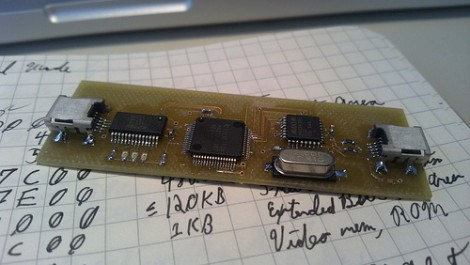
The Harford Hackerspace in Baltimore, Maryland just went public with the zen garden they built for the Red Bull Creation contest. It’s a CNC creation that will help ease your frustration with that DIY 3d printer that you just can’t seem to get calibrated correctly.
On the hardware side the base of the machine serves as a sandbox. Finding the correct grain size of the medium was one of the more difficult parts of the build. The stylus is driven along three axes using a gantry common in CNC builds. The pulleys and some brackets were 3d printed, with the remained of the brackets being laser cut from wood. The Bullduino commands the stylus via a stepper motor control board, and drives the LEDs via a bank of MOSFETs. Limiting switches were also included to ensure an error didn’t result in damage to the device.
After the break you can see a build montage put to one of the greatest 8-bit game soundtracks of all time. The one thing we wish they would have shown is the built-in leveling bar that is responsible for “erasing” the garden.
Update: The Harford Hackerspace members came through with a new video that shows the ‘erasing’ process. You’ll find it after the break.















